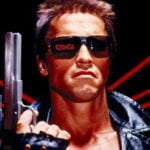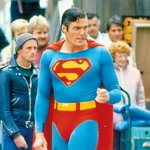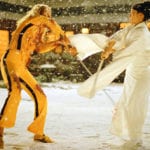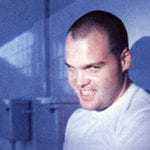 Technology
Technology  Technology
Technology  Humans
Humans 10 Everyday Human Behaviors That Are Actually Survival Instincts
 Animals
Animals 10 Animals That Humiliated and Harmed Historical Leaders
 History
History 10 Most Influential Protests in Modern History
 Creepy
Creepy 10 More Representations of Death from Myth, Legend, and Folktale
 Technology
Technology 10 Scientific Breakthroughs of 2025 That’ll Change Everything
 Our World
Our World 10 Ways Icelandic Culture Makes Other Countries Look Boring
 Misconceptions
Misconceptions 10 Common Misconceptions About the Victorian Era
 Mysteries
Mysteries 10 Strange Unexplained Mysteries of 2025
 Miscellaneous
Miscellaneous 10 of History’s Most Bell-Ringing Finishing Moves
 Technology
Technology Top 10 Everyday Tech Buzzwords That Hide a Darker Past
 Humans
Humans 10 Everyday Human Behaviors That Are Actually Survival Instincts
 Animals
Animals 10 Animals That Humiliated and Harmed Historical Leaders
Who's Behind Listverse?

Jamie Frater
Head Editor
Jamie founded Listverse due to an insatiable desire to share fascinating, obscure, and bizarre facts. He has been a guest speaker on numerous national radio and television stations and is a five time published author.
More About Us History
History 10 Most Influential Protests in Modern History
 Creepy
Creepy 10 More Representations of Death from Myth, Legend, and Folktale
 Technology
Technology 10 Scientific Breakthroughs of 2025 That’ll Change Everything
 Our World
Our World 10 Ways Icelandic Culture Makes Other Countries Look Boring
 Misconceptions
Misconceptions 10 Common Misconceptions About the Victorian Era
 Mysteries
Mysteries 10 Strange Unexplained Mysteries of 2025
 Miscellaneous
Miscellaneous 10 of History’s Most Bell-Ringing Finishing Moves
Top 10 Behind The Scenes Facts About Spielberg Movies
Steven Spielberg hated school life. He was always picked last for sports matches. Bullies made his life a living hell. And his dyslexia affected his ability to concentrate. The youngster threw himself into amateur filmmaking, using his father’s movie camera to capture a series of quirky adventure films. Spielberg’s mother encouraged his infatuation with directing, even going so far as to make up excuses to get him out of class.
Spielberg caught his first big break after making a short film called Amblin. Universal was so impressed with his work that it immediately handed him a seven-year contract. The rest is history. Spielberg’s films have now grossed over $10 billion at the box office – a staggering milestone that no other director has equaled. With that in mind, let’s take a look at just 10 behind-the-scenes facts from the iconic director’s filmography.
Top 10 Behind The Scenes Facts About Dystopian Sci-fi Movies
10 The Crew Soiled Themselves Filming Raiders
Raiders of the Lost Ark features a chaotic chase through the bustling streets of Cairo. This action-packed sequence was actually filmed in Tunisia. While there, the cast and crew were struck down by a terrible bout of food poisoning. The illness was so severe that it ended up changing the way the movie played out. In a now-deleted scene, a Nazi soldier was given the order to shoot Sallah (John Rhys-Davies), one of Indy’s close friends and confidantes. But the Welshman’s explosive diarrhea derailed proceedings. “[T]his is sort of disgraceful,” Rhys-Davies recalled. “I remember Steven saying, ‘John could you get just down a bit lower to give them a better eyeline?’ And as I got down to give him a better outline, I filled my djellaba [an Arab tunic] in front of 200 people – and I didn’t care [laughs].”
In another scene, Indiana Jones was supposed to have a climactic showdown with a skilled Arab fighter. After numerous failed takes, with Harrison Ford needing frequent trips to the bathroom, the star pitched a suggestion to the director. “Steven, why don’t we just shoot the son-of-a-bitch?” And so the fight sequence, which stuntman Terry Richards had spent several months honing his sword skills for, was axed. Spielberg was one of the few crew members to avoid this leaky fate. Before filming began, he made a trip to an English supermarket and packed his trunk full of canned food. His diet consisted largely of Spaghetti-O’s for the duration of his time in Tunisia.
9 E.T. Almost Got a Sequel
E.T. was a massive blockbuster hit on release, raking in an impressive $800 million during its initial theatrical run. So it should come as no surprise that the studio executives wanted a sequel. Melissa Mathison, the original film’s writer, started spitballing ideas with Spielberg. The duo came up with a much darker tale: Nocturnal Fears.
According to Spielberg’s treatment of the project, Nocturnal Fears would kick off with a pale, flesh-eating extraterrestrial becoming stranded on Earth. The creature, known only as Zrek, sends out a distress signal to his alien buddies. Backup arrives, and a search party of evil, dagger-wielding aliens is dispatched from the mothership.
Elliott, E.T.’s human companion from the first film, intercepts a signal from space using a communicator device. Thinking the signal must be from E.T., Elliott convinces his friends to bike down to the forest. But the mutant aliens quickly discover the children and abduct them. The ship’s leader orders their interrogation in a bid to locate Zrek. Hearing Elliott’s desperate pleas for help, E.T. sets off on his own daring rescue mission. The project was ultimately scrapped, with Spielberg conceding that there was nowhere left to take the tale. Decades later, however, the story continued in the form of a Christmas ad. Spielberg gave the project his blessing, providing the ad’s director with guidance on how to go about shooting the mini sequel.
8 Spielberg Refused a Salary for Schindler’s List
Schindler’s List tells the story of Oskar Schindler, a factory owner and Nazi Party member who spent all of his earthly possessions protecting Jewish refugees. Schindler employed mostly Polish Jews in a desperate bid to stop the Nazis from sending them to the gas chambers. He bribed SS officers to keep his workers out of the concentration camps and even moved his entire factory to guarantee their safety. Spielberg was convinced his movie adaptation of the events would be a flop, thinking the general public wasn’t ready for a film about the Holocaust. He was wrong.
The film went on to gross a staggering $320 million worldwide. Spielberg did not accept a salary for his work, claiming it would be tantamount to taking blood money. He donated his box-office earnings to various Jewish organizations, including the U.S. Holocaust Memorial Museum. Studio execs gave Spielberg complete control over the movie, but only on one condition: he would direct Jurassic Park.
After the war, Oskar Schindler went bankrupt and his wife left him. But the “Schindler Jews” (Schindlerjuden) rallied around their rescuer and provided him with financial assistance. Following his death in 1974, he was the only Nazi Party member to be buried on Mount Zion in Jerusalem.
7 Jurassic Park’s T-Rex was a Jittery Mess
Jurassic Park’s prehistoric menace was, of course, the iconic T-Rex. Spielberg hired animatronics guru Stan Winston to oversee the project, admiring his previous work on the extraterrestrial queen from Aliens. The creature’s metal and wood framework was covered in layers of chicken wire, fiberglass, and sculpted clay – a process that took months of intense work. Warner Bros. then had to reinforce the film stage to accommodate the six-ton behemoth.
These efforts were nearly undone, however, when Spielberg decided to film the T-Rex’s first scenes in the rain. “We found out not long before we were going to shoot that it was going to be raining,” explained puppeteer John Rosengrant. “So it went from this beautifully tuned machine that worked fantastically to… suddenly the foam-rubber skin started absorbing water, and now all of the calculations were off and it started to shudder.”
In between takes, workers had to manually dry the 18-foot reptile with towels and blowers. If the team failed to act quickly enough, the mechanical beast would begin to shake erratically. According to the movie’s producer, Kathleen Kennedy, the rain messed with the hydraulics and caused the T-Rex to move on its own. “We’d be, like, eating lunch, and all of a sudden a T-Rex would come alive. At first we didn’t know what was happening… You’d hear people start screaming.”
6 Saving Private Ryan Required Grueling Preparation
Saving Private Ryan’s visceral opening depicts the Omaha Beach landings of 1944. Clocking in at 24 minutes of screen time, the hard-hitting sequence cost around $12 million to make. Entire support roads were built just to transport filming equipment to Curracloe Beach in Ireland. Real landing ships, including two genuine WWII vessels, were transported to the area. Local metalworkers set to work creating Czech hedgehogs – large metal structures that the Nazis used to prevent boats from reaching the beaches during high tide. The sequence required thousands of crew members, 40 barrels of fake blood, and several tons of explosives. Amputees were used to shoot scenes involving dismembered soldiers, and a thousand anatomically accurate dummies of dead troops were scattered across the shoreline.
The cast was put through the ringer, too. Spielberg enlisted the aid of Captain Dale Dye, a former U.S. Marine Corps soldier, to take charge of a six-day boot camp. The leading actors – which included the likes of Tom Hanks, Vin Diesel, and Tom Sizemore – slept in the freezing cold, ate war era rations, and carried 40 pounds of gear along five-mile treks. While Spielberg wanted to ensure his actors delivered an authentic performance, not everyone was convinced. Every single one of the actors voted to leave the boot camp, with one exception: Tom Hanks. Hanks teamed up with Captain Dye to convince the others to stick it out. “I stood out there in the rain and said essentially what Tom had said, that you owe it to these people you’re representing on film to get this right,” Dye explained. “And in order to get it right, you’ve got to experience some of what they experienced.”
5 Jaws was Nicknamed ‘Flaws’
Jaws was a nightmare to shoot. Overworked crew members would return to shore sunburned and covered in sea salt. The mechanical sharks, which needed over a dozen people to operate, experienced constant technical failures. One even sank, forcing divers to launch a deep-sea rescue mission. Sea salt got into the animatronics’ delicate innards, leading to failure of the pneumatic hoses. One of the actors, Carl Gottlieb, accidentally fell into the water and almost got hit by propeller blades. In the end, production was three months over schedule, the budget almost triple its original limit. It’s no wonder, then, that the crew unofficially renamed the film “Flaws.”
The writing was on the wall from the beginning. Before shooting started, Spielberg took George Lucas, Martin Scorsese, and John Milius to see one of the model sharks in a hangar. Lucas ended up getting his head stuck in the shark’s mouth (Spielberg deliberately closed it using a remote control). “Steven tried to open the mouth and it wouldn’t open, we’d broken it,” Milius said. When Lucas eventually prized his head free, the group simply ran away. “We knew we’d broken something expensive.”
After failing to wrap up the project on time, Spielberg started hearing rumors that his directorial career was over. He pushed forward, finding evermore creative ways to shoot scenes without his animatronic monstrosities (he dubbed them turds). Parts of the film simply allude to a shark’s presence, like the scene in which the creature drags a barrel across the ocean’s surface. Others were filmed using real sharks. The team’s efforts paid off. The film was the highest grossing title of its time and eventually went on to earn half-a-billion dollars worldwide.
4 Close Encounters and the Roller Skating Orangutan
Close Encounters of the Third Kind follows the journey of Roy Neary, an electrician who has a chance encounter with a UFO. Roy spends much of the film coming to terms with his experience and has a vision of a rock formation. This vision eventually leads Neary to Devils Tower, where he meets the aliens for the first time.
Spielberg wanted to create a race of aliens with otherworldly movements. The director explained his unusual methods thusly: “I wanted the aliens to look like aliens. So my first idea was to get an orangutan, and dress the orangutan in an E.T. suit, and let the E.T. behave almost simian like.” So the crew dressed an orangutan in a spandex body suit and placed an alien head over its face. They then tried to get the ape to glide down a ramp on a pair of roller skates. This all went horribly wrong, though, and the orangutan refused to leave its handler’s side. The director eventually gave up, after the creature ripped off its alien mask and went sailing down the ramp backwards.
Spielberg compromised on his vision. He dressed up a group of children in alien costumes and used clever lighting tricks to maintain the mystique of the visitors. A spindly alien puppet was used to introduce the child-like race of aliens. The final scene, which required very delicate hand movements, incorporated a sophisticated animatronic alien.
3 Munich Featured a Future Prime Minister in Drag
In April 1973, the Israeli Defense Forces (IDF) entered a compound in Lebanon and assassinated several members of a terrorist organization called Black September. The mission was carried out in response to the Munich massacre of 1972, in which Palestinian terrorists kidnapped and murdered a group of Israeli athletes during the Summer Olympics. Three of the eight attackers survived the ordeal – following Germany’s botched rescue attempt – and were held in Munich awaiting trial.
Around six months later, another group of terrorists hijacked a Boeing 727 en route to Frankfurt. The terrorists demanded the release of the Munich attackers. Germany, fearing a repeat of the previous massacre, capitulated to the demands. The terrorists fled to Libya, where they received a hero’s welcome. Muammar Gaddafi’s government gave the terrorists refuge, parading them on national television.
The incident prompted Golda Meir, then Israeli Prime Minister, to launch Operation Wrath of God. Her government assembled a crack team of assassins to execute those responsible for the attacks. Spielberg’s film features a scene in which Israeli commandos wipe out the masterminds behind the Munich massacre. A young Ehud Barak, disguised in women’s clothes, leads a hit squad into a building full of Palestinian terrorists. He and his men proceed to kill the targets on the IDF’s extensive hit list. This incident actually happened. In preparation for the mission, the team even practiced the art of cross-dressing, with disguised “couples” pretending to embrace one another.
Back in Israel, Barak’s wife was surprised to see her husband sporting makeup. “I looked at him and saw that he was wearing makeup. I said to him, ‘Ehud, why do you have blue makeup on your eyes?’ At first he didn’t really want to explain… Then he told me that he played the part of a woman in this operation.” Ehud Barak would go on to become Prime Minister of Israel in 1999.
2 Hook and the rise of Tinker Hell
In 1991, Julia Roberts was all set to play Peter Pan’s diminutive sidekick, Tinker Bell, in the children’s adventure film Hook. But the up-and-coming star was going through some personal turmoil. She had just broken up with her fiancé, Kiefer Sutherland, mere days before their wedding. The 23-year-old initially backed out of the film, before changing her mind a few days later. Insiders claim Roberts became isolated from the rest of the crew, perhaps not entirely unusual given that most of her scenes were filmed on a green screen with few people around.
At one point, Roberts went on vacation to Ireland but didn’t tell the production team when she would return to continue filming. Spielberg brought Michelle Pfeiffer onto the project and started doing costume fittings, just in case Roberts bailed on the movie. On another occasion, the starlet overheard a crew member call out Kiefer’s name. She stormed up to the set coordinator and demanded they remove her ex from the premises. It turned out that Roberts had mistaken the name Kieffo – Dustin Hoffman’s stunt double – for Kiefer. Her antics quickly earned her the nickname “Tinker Hell.”
After wrapping up the film, Spielberg explained some of the tension: “Julia probably went through the most trying times of her life, and it was simply bad timing for all of us that she happened to start on Hook at that low point.” Roberts reacted badly to Spielberg’s comments, equating the famed director to a “turncoat.”
1 Kids Died on the set of Twilight Zone
In 1982, directors John Landis, Steven Spielberg, Joe Dante, and George Miller began shooting Twilight Zone: The Movie. One of the anthology’s subplots, Time Out, tells the story of a frustrated worker whose Jewish colleague beats him to a promotion. After work hours, the man, Bill Connor, sits in a bar spewing Jewish epithets. The action begins when Bill leaves the bar and suddenly finds himself taken back in time to Nazi-occupied Europe. As German soldiers give chase, Bill experiences different points in history, including the Vietnam War.
John Landis took directorial control on Time Out. In June 1982, his crew attempted to simulate the destruction of a Vietnamese village. In one sequence, Bill, played by movie star Vic Morrow, was supposed to save a pair of young Vietnamese children from helicopter gunfire. But the shoot went tragically wrong. As the cameras rolled, a pyrotechnic blast struck one of the helicopter’s rotor blades. It spun out of control and landed on top of the actors, decapitating Vic Morrow and one of the children. All three were dead.
The crash sparked a media backlash and resulted in changes to safety regulations in the movie industry. An investigation into the incident unearthed some uncomfortable truths. Landis had hired the child actors illegally in a bid to dodge California labor laws. The youngsters, aged six and seven, should not have been working at 2:20 in the morning or near any explosive devices. Landis and several crew members were brought up on charges of manslaughter but were later acquitted.
The families of the children launched civil proceedings against Warner Bros. and the movie’s creators (Spielberg included), claiming millions in compensation. Spielberg wanted to abandon the film entirely. But the studio pressed ahead, believing any cancelation would be construed as an admission of guilt. Spielberg’s friendship with John Landis never recovered. A year later, he released a statement on the incident: “No movie is worth dying for. I think people are standing up much more now than ever before to producers and directors who ask too much.”
10 Hilarious Realities Behind Your Favorite Movie Scenes








